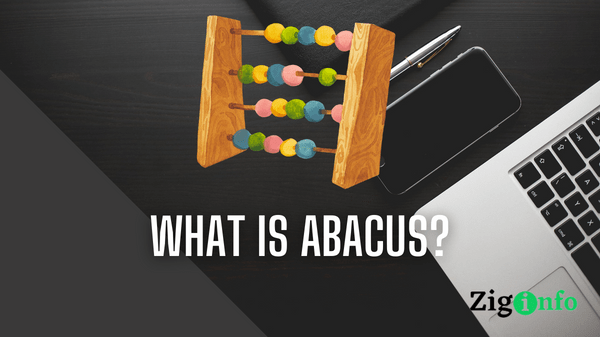What is Abacus – How does the Abacus Work?

The abacus is an ancient counting tool that has been used for thousands of years in various cultures around the world. It is a simple yet powerful device that helps people perform arithmetic operations such as addition, subtraction, multiplication, and division. In this article, we will explore the history of the abacus, how it works, and its relevance in today’s world.
History of the Abacus
The abacus has a long and fascinating history that can be traced back to ancient civilizations in Egypt, China, and Greece. The earliest known abacus was used by the Sumerians around 2500 BC. It was made of sand and used to record transactions and keep track of goods in a marketplace. The abacus was also used in ancient Egypt around 2000 BC and in China during the Han Dynasty (202 BC – 220 AD).
The abacus as we know it today was developed in China during the Ming Dynasty (1368-1644). The Chinese abacus, also known as a suanpan, is a rectangular frame with wooden beads or stones on rods. Each rod represents a place value, with the beads or stones indicating numbers. The Chinese abacus was widely used in Asia until the invention of the calculator.
The abacus was also introduced to Europe in the 13th century by Arab traders. It became popular in medieval Europe and was used by merchants, bankers, and traders to perform calculations. The European abacus, also known as a counting board, had beads or stones on wires instead of rods. It was used until the invention of the decimal system and the modern calculator.
How does the Abacus Work?
The abacus is a simple yet powerful tool for performing arithmetic operations. It is based on the principle of place value, which means that the value of a digit depends on its position in a number. For example, in the number 123, the digit 1 represents one hundred, the digit 2 represents twenty, and the digit 3 represents three.
The abacus has different types of beads or stones that represent different place values. The beads on the right represent units, the beads on the next rod represent tens, the beads on the next rod represent hundreds, and so on. The beads on each rod are divided into two groups: the upper beads and the lower beads. The upper beads represent five, while the lower beads represent one.
To use the abacus, you move the beads up and down to represent numbers. For example, to represent the number 123, you would move the bead on the hundreds rod up to the top, the bead on the tens rod up by two, and the bead on the units rod up by three. To perform addition, you move the beads to represent the numbers you want to add, and then count the total number of beads. To perform subtraction, you move the beads to represent the numbers you want to subtract, and then count the number of beads that are left.
Relevance of the Abacus Today
In today’s world, the abacus is still used in some cultures and communities as a teaching tool for children to learn arithmetic. It is especially useful for children who have difficulty learning arithmetic using other methods. The abacus is also used by some professionals, such as accountants and financial analysts, to perform quick calculations.
In addition, the principles behind the abacus have been incorporated into modern computing. The binary system used in computers is based on the same principles of place value as the abacus. Computers also use logic gates, which are similar to the beads on an abacus, to perform calculations.
Conclusion
The abacus is an ancient counting tool that has been used for thousands of years in various cultures around the world. It is a simple yet powerful device that helps people perform arithmetic operations such as addition, subtraction, multiplication, and division. The abacus has a rich history that dates back to ancient civilizations in Egypt, China, and Greece. It was widely used in Asia and Europe until the invention of the calculator.
Despite being an ancient tool, the abacus is still relevant in today’s world. It is used as a teaching tool for children to learn arithmetic, and it is also used by some professionals to perform quick calculations. The principles behind the abacus have also been incorporated into modern computing, which shows the lasting impact of this ancient tool.
In conclusion, the abacus is an important part of human history and a valuable tool for learning and performing arithmetic. Its impact on human civilization cannot be understated, and it continues to be relevant in today’s world. Whether used as a teaching tool for children or as a tool for professionals, the abacus is a testament to the ingenuity of human beings and our ability to create simple yet powerful tools to solve complex problems.
Also read…
What is Webinar